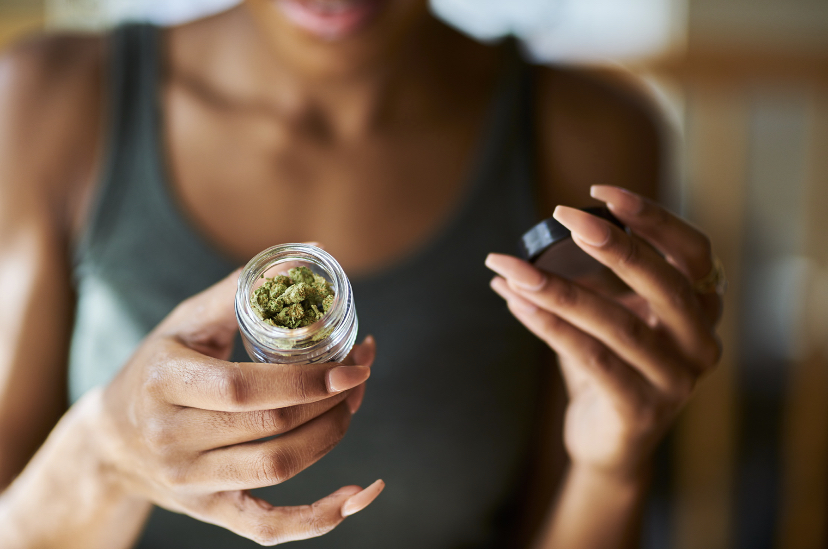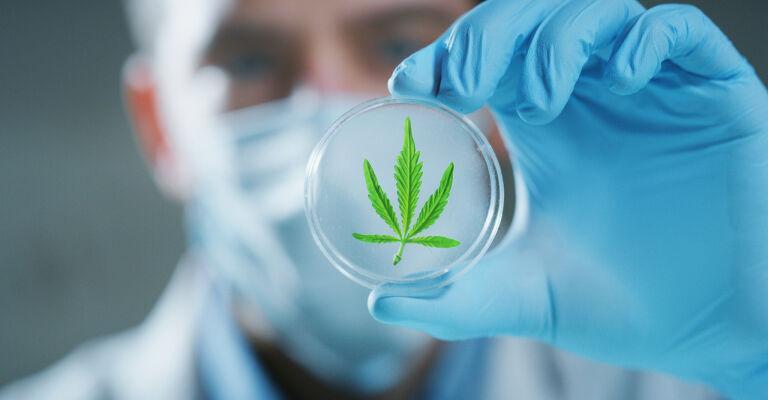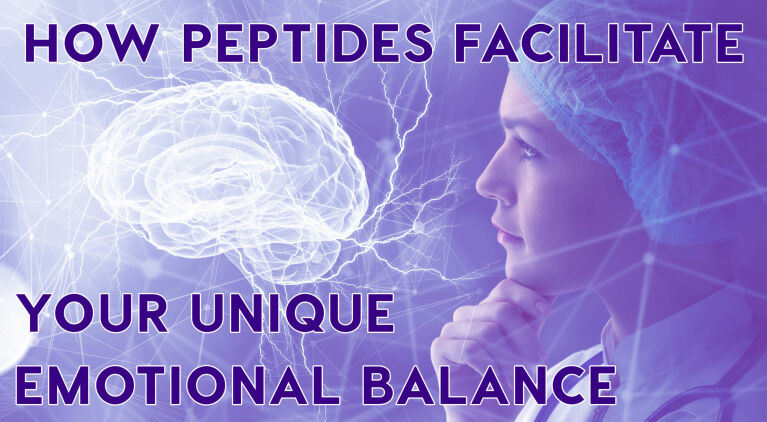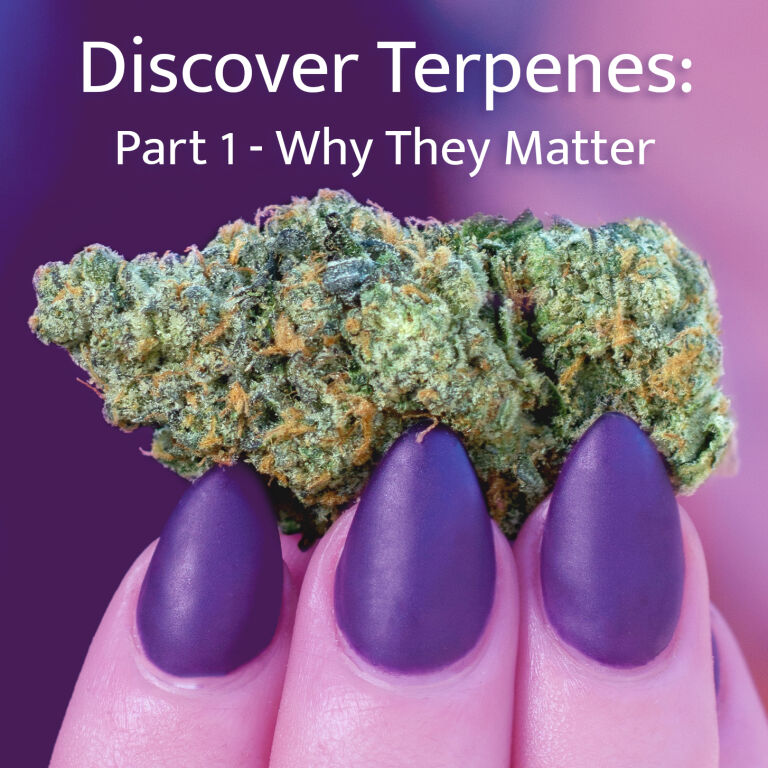When we think of cannabis, many of us will initially associate the plant with getting high. Decades of misguided propaganda has created some trepidation about THC that keeps patients from even considering trying cannabis.
What if it’s possible to benefit from one of the oldest medicinal plants our world has to offer without that inconvenient intoxication? Well, we’re in luck, because the molecules cannabis creates in its essential oils aren’t actually the ones that get you high, and adding them to your daily regimen turns out to be a welcome bonus for health and healing.
Welcome to the world of cannabinoid acids.

The chemical factories of glandular trichomes that cover cannabis plants with their stickiness don’t make many of the neutral cannabinoids, like THC or CBD. Although some neutral cannabinoids will naturally become synthesized somewhere on any given plant, the overwhelming majority of the oil from a freshly-harvested plant holds a bounty of what we call cannabinoid acids, the chemical precursors of those molecules we’re more familiar with.
In simple terms, cannabinoid acids are what we actually get from the oil extracted from the cannabis plant at harvest.
Through a delicate dance of molecular manipulation carried out as the plant moves through its growth cycle towards maturity, cannabinoids are created and continuously transformed. Starting with the synthesizing of the mother of all cannabinoids, cannabigerolic acid (CBGA), the plant’s busy enzymes follow genetic guidelines buried in the cellular memory, speeding the transformation of CBGA into a multitude of cannabinoid acids.

Cannabinoid acids have carboxyl groups attached, groupings of hydrogen, carbon, and oxygen atoms that must be manipulated through time, temperature or pressure in order to release the grouping, leaving us with the more familiar neutral cannabinoids.

Cannabinoid acids interact with our endocannabinoid systems (ECS) through different cellular pathways than neutral cannabinoids, and each has its own contribution to helping bring your body back into balance.
Our current understanding of the medicinal value offered from neutral cannabinoids – those that have shed their carboxyl group – is profound and growing almost daily. As cannabis becomes more accepted around the globe, research into cannabinoid acids has been offering enticing evidence suggesting the acid molecules may be as valuable, if not more medicinally valuable than the decarboxylated variety.
What do cannabinoid acids have to offer?
In a world still riddled with restrictions on cannabis research, much of what we know for certain about the cannabinoid acids is from animal studies or the use of isolate molecules. For a while longer we’re the lab rats the research community is catching up to.
It’s worth noting right here at the beginning that:
All cannabinoid acids are non-psychoactive &
cannabinoid acids can take three to four weeks of regular dosing to have the desired effects.
There are many cannabinoids still unstudied, so we’ll concentrate on the few we have knowledge of that will be useful to you, the consumer.

CBGA (Cannabigerolic acid) is the precursor of all other plant cannabinoid acids. By the time a plant comes to harvest the energetic enzymes in the plants have already changed most of CBGA into other cannabinoids, the expected yield of this particular molecule will be only around 1-1.5% of total cannabinoids.
CBGA adds its weight to the entourage effect by making it easier for other cannabinoids to be absorbed by the body.

THCA (Tetrahydrocannabinolic acid) works with the ECS receptors outside the central nervous system to tamp down muscle spasms, inflammation and the pain that accompanies it. There’s particular interest in how effectively THCA interacts with GPR55 to accomplish this goal of controlling inflammation. GPR55 is widely present in the gut system, and as we know, when the gut is unhappy, it’ll make every other bit of you feel the same.
Of interest to those suffering from neurological disorders like Huntington’s disease, THCA also shows promise in protecting the valuable neurons in your brain from the destruction of inflammation.
Then there’s THCA’s ability to stop cancer cells from multiplying out of control, and its usefulness to counter the negative side effects of chemotherapy, using different pathways than THC to achieve similar, if not more beneficial results.
Research is suggesting that combining THC with THCA will bring more effective relief to those treating seizure disorders, arthritis, and pain. It appears to take very low doses of this cannabinoid acid to control symptoms of neural storms, inflammation and nausea that often accompany these conditions.
Dr. Bonni Goldstein, an authority on seizure disorder treatments with cannabis, has seen relief for her patients who don’t respond as expected to CBD by substituting or adding THCA to the formulations.
The bottom line here is that you can use THCA to treat many of the same conditions you’d use THC for, without the potential challenge of being high. It’ll take longer for the cells to respond to the treatment than if you use neutral cannabinoids alone, but then using cannabinoid acids is a long-term solution, not a quick shot.
A very important consideration regarding THCA
Cannabinoid acids are volatile molecules, meaning they’re always trying to release the carboxyl groups. THCA is aggressively working to become THC. Store your THCA products in a cool, dark place, like your refrigerator, to slow down this natural transformation and limit the psychoactive effects of your medicine.
Again: if you store your THCA products on your counter they will become more and more psychoactive over time.

CBDA (Cannabidiolic acid) shows itself to be effective in controlling seizure disorders, tamping down inflammation, and quelling nausea, much the same way CBD does, though often at lower doses than CBD. In particular, CBDA shows more affinity to get nausea under control than does CBD, and at much lower doses than is required with the neutral cannabinoid.
Why would this be so, you ask? It may be partly due to your body’s ability to convert CBDA into CBD, a rearrangement of atoms we know the body will not do with THCA. It appears that, as with THC and THCA, it’s a more effective treatment to combine CBD with CBDA in your formulations, to speed up the onset of desired effects.
CBDA also demonstrates an ability to strongly inhibit breast cancer cells from migrating from one area of your body to another.

CBCA (Cannabichromenic acid) is not yet widely available or studied as intensely as THCA or CBDA, but like its more famous partners, it appears to offer many of the same benefits as its neutral cannabinoid CBC. If this holds as true, then we can anticipate that CBCA will counter inflammation and pain by working with TRPV1 the same way it has already shown an affinity to have even more effect on the serotonin receptors 5-HT1A in your brain than CBC will have.
Working together, TRPV1 and 5-HT1A receptors are responsible for modulating most of what makes pain and inflammation actually hurt.
It looks like we may find that combining CBDA and CBCA in a cannabis formulation will increase chances of controlling systemic pain and inflammation.
The entire medical community can take comfort that early research into CBCA is also beginning to generate interest in using the molecule as a potential antibacterial agent against MRSA.

What we’ve learned
Cannabinoid acids offer many of the same benefits of the more famous decarboxylated neutral cannabinoids, without the sometimes undesirable intoxication that can accompany THC. Following different pathways into the cells the cannabinoid acids add another valuable layer to the therapeutic effects gained by allowing yourself to make good use of one of Mother Earth’s oldest holistic medicines.
Experiment and find your own personal benefits from what cannabinoid acids offer. Thinking of cannabis more as a food than an intoxicant or medicine can yield tremendous advantages to a body intent on attaining the delightful balance of homeostasis. The safety profile of cannabis lends a blanket of confidence to your explorations. Remember, even when using cannabinoid acids the policy remains:



